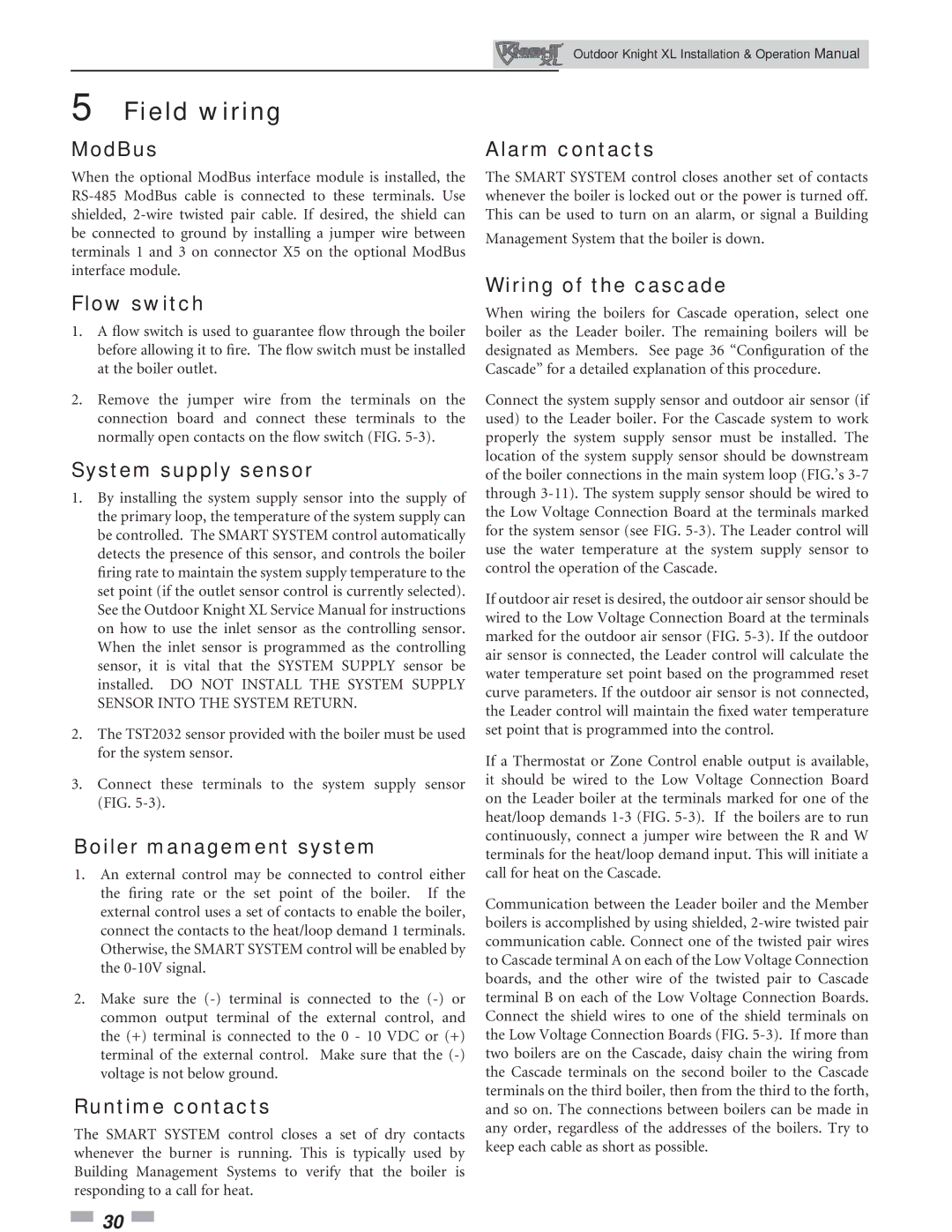400-801 specifications
The Lochinvar 400-801 is a high-efficiency commercial boiler that embodies advanced engineering and cutting-edge technology. Designed for a variety of commercial applications, this boiler is known for its reliability, efficiency, and robust performance.One of the standout features of the Lochinvar 400-801 is its high thermal efficiency, which can reach up to 99%. This efficiency not only reduces fuel consumption but also lowers operating costs, making it an economical choice for businesses seeking to minimize overhead. The boiler employs a stainless steel fire-tube heat exchanger that ensures optimal heat transfer and durability. This construction allows for enhanced resistance to corrosion, thereby extending the boiler's lifespan.
The Lochinvar 400-801 is equipped with advanced control technologies that enhance its performance. With its built-in SMART SYSTEM control, users can easily monitor and manage the boiler’s operations, optimizing performance while ensuring ease of use. This control system features a user-friendly interface that provides real-time data, including temperature settings, pressure readings, and operational status, allowing for quick diagnostics and efficient troubleshooting.
Safety is paramount in the design of the Lochinvar 400-801. The boiler includes a comprehensive safety system that incorporates multiple safety interlocks and a venting system that prevents backflow and ensures safe exhaust. Moreover, the unit is designed to operate with minimal noise, making it suitable for environments where noise reduction is crucial.
Installation and maintenance of the Lochinvar 400-801 are straightforward, thanks to its compact design and multiple venting options. The low-profile construction allows for flexibility in placement, making it an ideal fit for tight spaces. Maintenance tasks are simplified with accessible components, minimizing downtime and ensuring the system operates efficiently over its lifespan.
In conclusion, the Lochinvar 400-801 stands out in the commercial boiler market with its blend of efficiency, reliability, and innovation. With its advanced technologies and features, businesses can achieve significant energy savings while ensuring comfortable and consistent heat for various applications. The Lochinvar 400-801 is an investment in quality and performance, backed by a well-established brand in the heating industry. Whether for a new installation or a replacement, this boiler offers a comprehensive solution for commercial heating needs.
